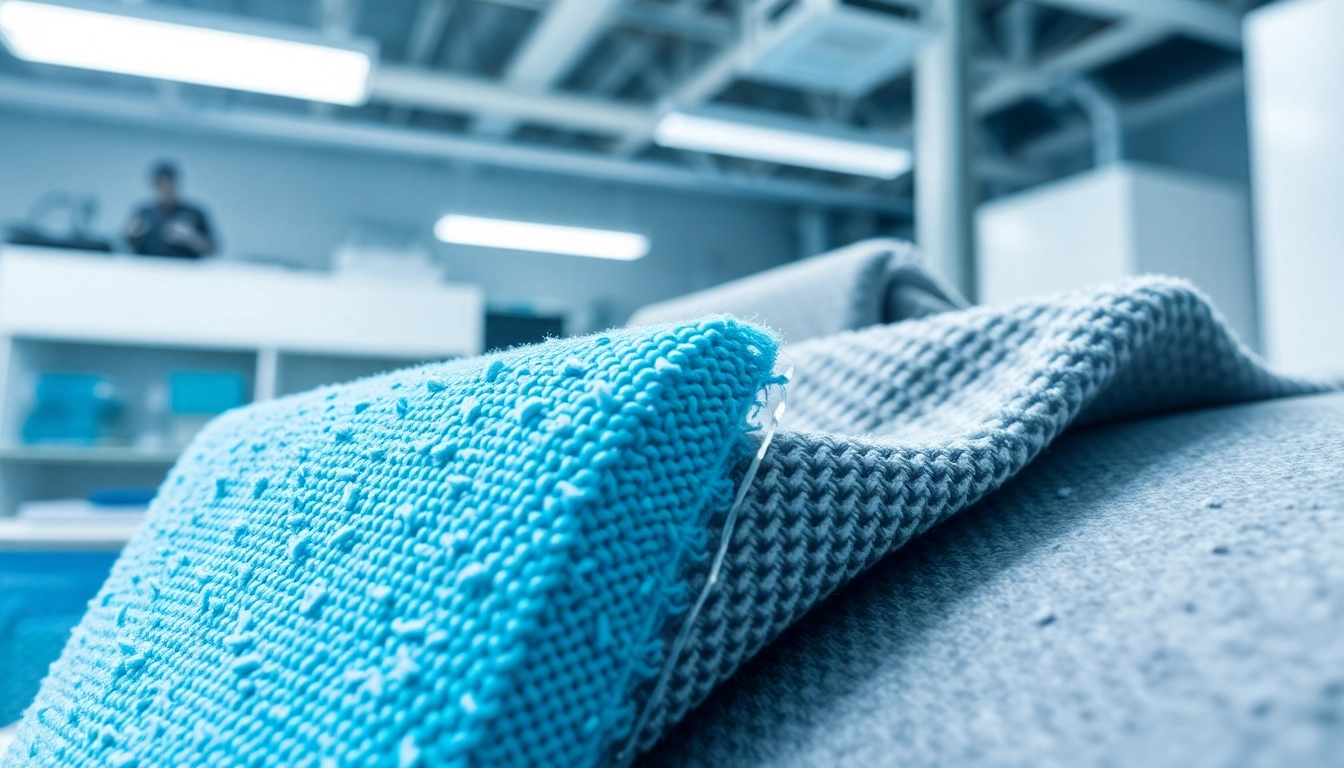Understanding Thermal Management Materials
Definition and Importance
Thermal management materials are critical components in the design and operation of electronic devices, enabling effective heat dissipation to maintain optimal performance and prolong electronic lifespan. As technology advances and devices become more compact, the need for effective thermal management solutions grows increasingly important. These materials help in preventing overheating, which can lead to reduced performance, component failure, and even catastrophic device malfunction. A comprehensive understanding of thermal management materials is essential for engineers, manufacturers, and designers to choose the right products for their specific applications.
Types of Thermal Management Materials
There are various types of thermal management materials, each tailored for specific applications. The main categories include:
- Thermal Interface Materials (TIMs): These include thermal greases, pads, and gels that fill air gaps between heat sources and heat sinks to enhance thermal conductivity.
- Heat Sinks: These are metallic structures designed to dissipate heat away from components through conduction and convection.
- Phase Change Materials (PCMs): These materials absorb, store, and release thermal energy as they change phases, providing a dynamic thermal management solution.
- Insulating Materials: Often made of silicone or polyurethane, these materials prevent unnecessary heat loss and protect sensitive components from overheating.
- Gap Fillers: These soft materials are used to bridge gaps in assemblies where TIMs may not provide a perfect fit, ensuring efficient heat transfer.
Applications in Electronics
The applications of thermal management materials extend across various domains within electronics, including:
- Consumer Electronics: Smartphones, tablets, and laptops utilize TIMs and heat sinks to manage heat generated by processors and batteries.
- Automotive: In electric vehicles (EVs), thermal management materials prevent overheating of batteries and power electronics.
- Industrial Equipment: Machinery and industrial controls use thermal management solutions to ensure reliable operation under varying environmental conditions.
- Telecommunications: Base stations and servers incorporate heat dissipation components to maintain efficient functioning.
Key Components of Thermal Management
Role of Thermal Interface Materials (TIMs)
Thermal Interface Materials (TIMs) play a pivotal role in enhancing thermal conductivity between heat-generating components and heat sinks. The effectiveness of TIMs is determined by various factors, including thermal conductivity, viscosity, and thickness. High-performance TIMs are formulated to minimize thermal resistance while maximizing heat transfer efficiency. They are crucial not only for improving heat dissipation but also for reducing the risk of thermal cycling damage associated with large temperature fluctuations.
Heat Sinks vs. Thermal Pads
While both heat sinks and thermal pads are essential for effective thermal management, they serve different purposes:
- Heat Sinks: These are solid metal structures, often made from aluminum or copper, designed to increase the surface area available for heat dissipation through airflow or conduction. Their geometry is carefully designed to maximize exposure to cooling air, enhancing their effectiveness.
- Thermal Pads: These semi-solid materials are used to improve the contact between heat sources and heat sinks. They fill in microscopic surface imperfections, ensuring better thermal conduction than air gaps, while also providing a certain degree of insulation.
The choice between heat sinks and thermal pads depends on the specific requirements of the application, including available space, weight constraints, and thermal performance needs.
Adhesives and Gap Fillers
Thermal adhesives and gap fillers are used to bond components and fill voids in assemblies, enhancing the overall thermal efficiency of electronic systems. Thermal adhesives provide structural integrity while ensuring thermal conductivity, often eliminating the need for mechanical fasteners. Similarly, gap fillers play a crucial role in ensuring effective heat transfer by conforming to the surfaces they connect, thus eliminating air gaps that can hinder performance.
Choosing the Right Thermal Management Material
Factors to Consider
Selecting the appropriate thermal management material requires careful consideration of various factors, including:
- Thermal Conductivity: The material’s ability to conduct heat, crucial for maximizing heat dissipation.
- Application Environment: Factors like temperature range, humidity, and mechanical stress can influence material selection.
- Compatibility: Materials should be compatible with the substrates they will be in contact with, avoiding chemical reactions or degradation over time.
- Cost: While high-performance materials often come at a premium, it’s essential to balance performance with budget constraints.
Comparative Analysis of Popular Materials
The following table provides a comparative analysis of some popular thermal management materials:
| Material Type | Thermal Conductivity (W/mK) | Typical Uses | Pros | Cons |
|---|---|---|---|---|
| Thermal Grease | 0.5 – 12 | CPU/GPU bonding | Good conductivity, easy application | Can dry out over time |
| Thermal Pads | 1 – 20 | General electronics | Easy to handle, reusable | Less efficient than greases in high-performance applications |
| Gap Fillers | 2 – 7 | Power electronics | Great for irregular surfaces, good performance | Can be more expensive |
| Phase Change Materials | 5 – 10 | High-power applications | Excellent energy storage | Temperature dependent properties |
Best Practices for Selection
Choosing the right thermal management materials involves adhering to these best practices:
- Evaluate Thermal Performance Needs: Determine the heat load and thermal resistance requirements before selecting materials.
- Conduct Real-World Testing: If possible, test thermal management solutions in the actual operating environment to assess performance.
- Stay Current with Technology: Keep abreast of advancements in thermal management materials and technologies to leverage emerging solutions.
Implementing Thermal Management Solutions
Installation Techniques
Proper installation of thermal management materials is crucial for their effectiveness. Here are some standard techniques to follow:
- Surface Preparation: Ensure that surfaces are clean and free from contaminants. Use isopropyl alcohol to clean surfaces where TIMs will be applied.
- Correct Application: For thermal greases, apply an even layer to avoid air bubbles. For pads and gap fillers, use the manufacturer’s instructions for thickness and area coverage.
- Alignment during Assembly: Carefully align components to prevent damage to thermal interface materials and ensure proper contact.
Common Challenges and Solutions
Implementing thermal management solutions can present challenges, including:
- Overheating Components: If components still overheat despite the use of thermal materials, consider increasing heat sink size or improving airflow.
- Material Degradation: Ensure that chosen materials can withstand the operational environment, including temperature and humidity variations.
- Insufficient Thermal Management: Regularly monitor and adjust thermal management strategies based on device performance and environmental changes.
Performance Monitoring Strategies
Monitoring the effectiveness of thermal management solutions is critical for long-term success:
- Use Thermal Cameras: Infrared thermal imaging can help visualize heat distribution and identify hot spots in real-time.
- Implement Temperature Sensors: Integrate sensors into the design to continually assess component temperatures during operation.
- Regular Inspections: Conduct routine inspections and maintenance to ensure all thermal interfaces are intact and effective.
Future Trends in Thermal Management Materials
Innovations and New Materials
The field of thermal management is constantly evolving, driven by demand for better performance and efficiency. Innovations include:
- Advanced Composite Materials: New composites exhibit superior thermal properties and mechanical strength, enabling better customized solutions.
- Nano-Enhanced Materials: Incorporating nanoparticles into thermal pastes or pads can significantly boost thermal conductivity.
- Smart Materials: These materials adapt their thermal properties based on environmental conditions, optimizing performance dynamically.
Market Demands and Sustainability
As environmental concerns grow, sustainability in material sourcing and production becomes a priority in thermal management. Companies are seeking more eco-friendly materials and processes, alongside regulatory compliance.
Impact of Technology Advances
Technology has rapidly transformed thermal management solutions; with the rise of IoT devices and AI integrated systems, there is an increasing need for efficient and reliable thermal management materials. The market is expected to lean towards innovations that provide not only performance but also sustainability.





